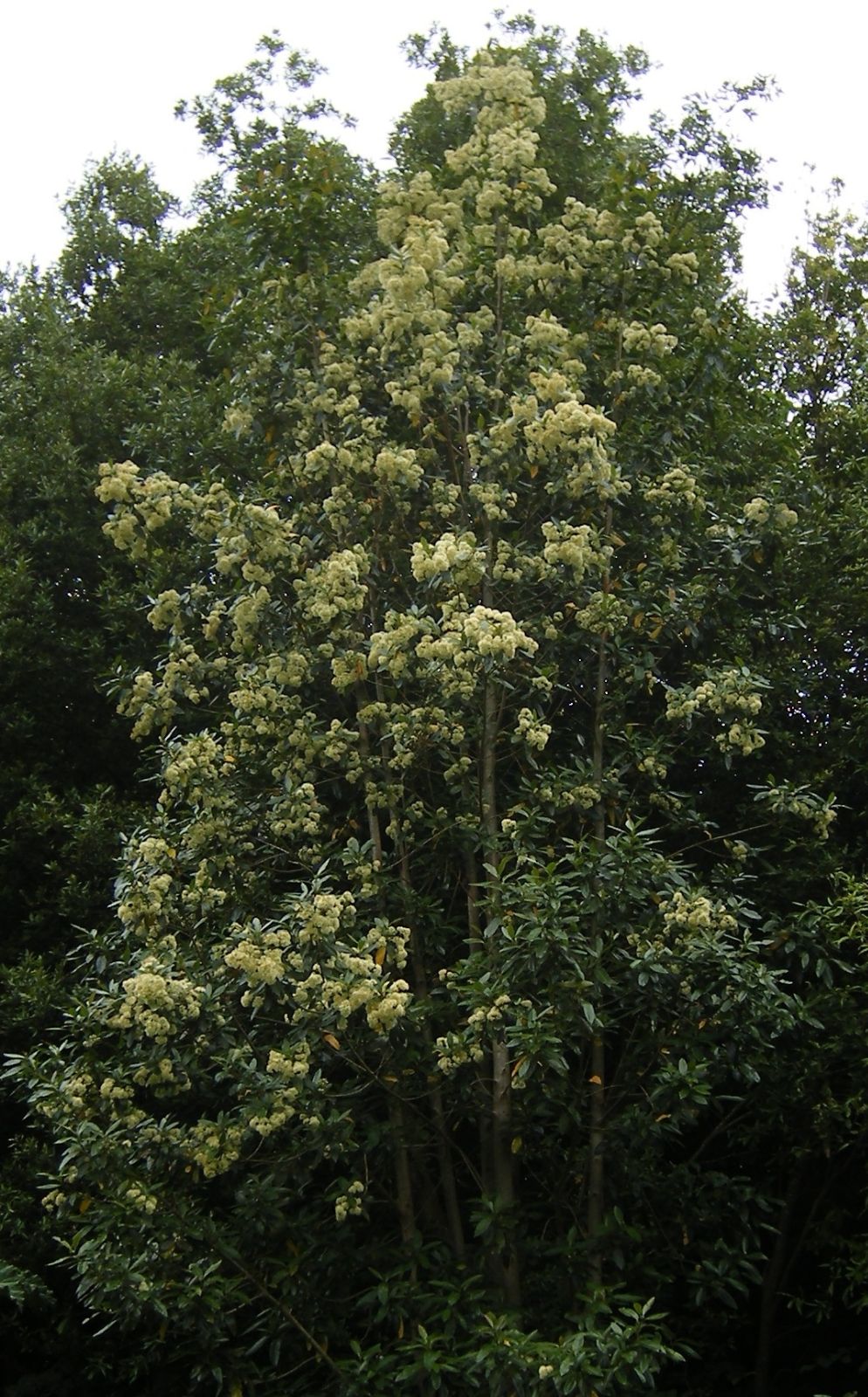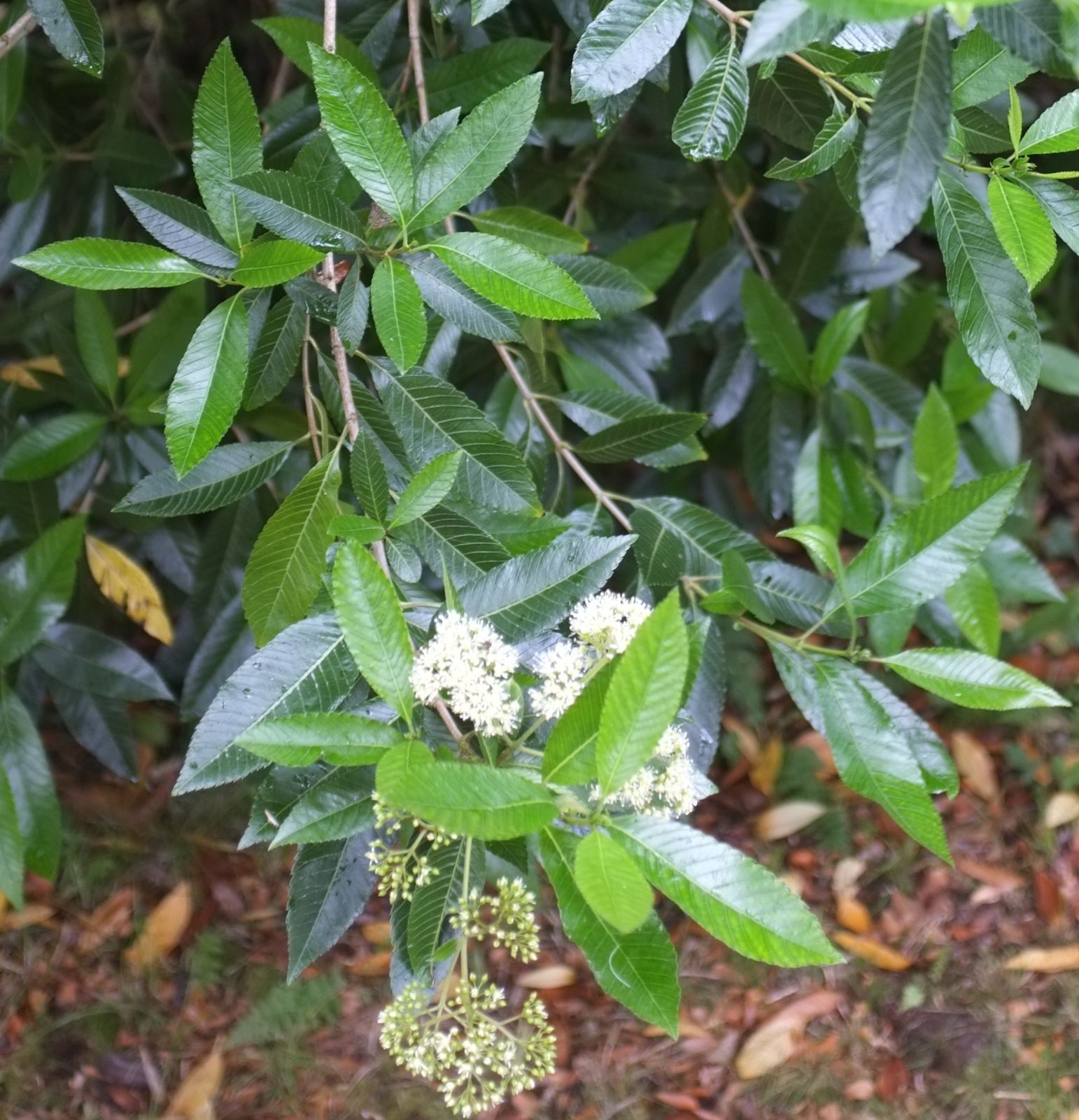Caldcluvia paniculata
Credits
Article from Bean's Trees and Shrubs Hardy in the British Isles
Recommended citation
'Caldcluvia paniculata' from the website Trees and Shrubs Online (treesandshrubsonline.
Genus
Synonyms
- Weinmannia paniculata Cav.
Other taxa in genus
An evergreen shrub or small tree to 15 or 20 ft. Leaves simple, oblong-lanceolate, tapered at both ends, 2 to j in. long, short-stalked, with sharply toothed margins and recalling, except in their thicker texture, the leaves of the sweet chestnut. The small white flowers are borne in June and July in axillary corymbs about 2 in. wide. Fruit a many-seeded leathery capsule.
This species is fairly common in the Chilean beech forests from Concepcion to the Rio Palena; it was introduced in 1832 and again by Comber in 1925. It is not so worthy a representative of its family as Weinmannia trichosperma, but a handsome evergreen. It is probably of the same order of hardiness as Eucryphia cordifolia and Nothofagus dombeyi and should succeed where these thrive. It grows well at Logan in Wigtownshire, but Mr Colledge tells us that it needs protection from wind.





